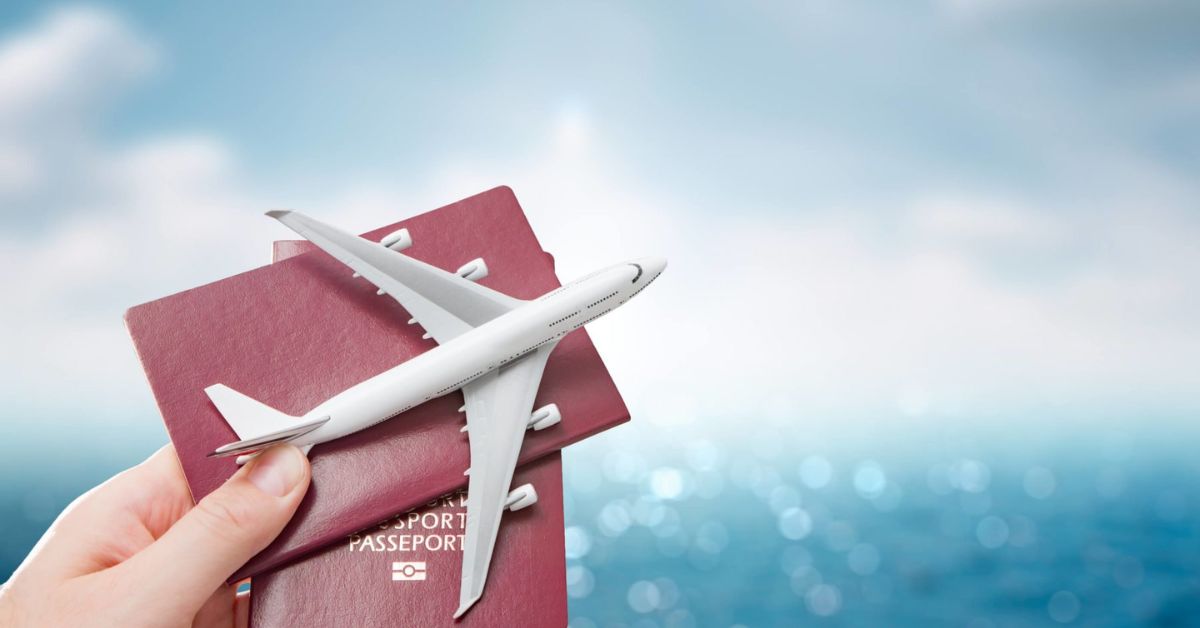When Policies Bend (Not Break)When Policies Bend (Not Break)
When navigating the travel policies of the Department of Defense (DoD), have you ever felt like you’re grappling an octopus? You’re not by yourself. The maze of regulations can seem like an impossible undertaking to many military personnel and civilian staff. But what if I told you that some of the most widely held notions regarding travel policies of the Department of Defense are flat-out false? Fasten your seatbelts, because we are going to set out on a voyage debunking myths that will turn you from an ignorant tourist into an astute road warrior.
Table of Contents
DoD Travel Policy Is One-Size-Fits-All
To begin, let me share a massive mistake. A lot of people think that DoD travel policy are as strict as a drill sergeant on the day of inspection. The reality? That’s far too simplistic.

Tailored Travel for Every Situation
Let’s start off with this massive misconception. DoD travel policies are perceived by many as being as strict as a drill sergeant on inspection day. The real deal? That is not at all how subtle it is.
Consider this breakdown:
| Travel Type | Policy Focus | Key Considerations |
| TDY | Short-term mission support | Per diem rates, travel duration, location |
| PCS | Long-term relocation | Housing allowances, dependent travel, shipment of household goods |
| Deployment | Mission-critical movement | Combat zone entitlements, family separation allowances |
But that’s not all. Policies also vary based on your branch of service, rank, and even the specific mission you’re supporting. An Air Force captain on a training exercise will have different allowances than a Navy SEAL on a covert op. It’s all about context.
When Policies Bend (Not Break)
Now let’s begin our case study. Captain Sarah Thompson (name altered to protect privacy) was scheduled for a TDY to a high-cost area lasting six months. Normally, she would have stayed in on-base housing, but there were no rooms available because of a base-wide event. Rather than being abandoned, the policy enabled her to book off-base lodging at the per diem cost, giving her peace of mind that her mission would take precedence over her place to sleep.
“I was shocked at how flexible the policy was,” Capt. Thompson said. “Once I understood the rules, I realized they’re designed to support us, not hinder us.”
Pro tip: Always read the fine print for your specific travel orders. That’s where the magic happens—and where you’ll find the flexibility you need.
You’re Stuck with Whatever Lodging They Assign You
Oh, if I had a nickel for every time I’ve heard this one! It’s a myth as persistent as a bad cold, but let’s clear the air once and for all.
Busting the Lodging Bubble
The DoD Preferred Lodging Program isn’t a prison sentence; it’s more like a well-curated list of recommendations. These lodgings are vetted for quality, safety, and value—think of them as your first line of defense against sketchy motels and overpriced tourist traps.
But here’s the kicker: while you’re encouraged to use preferred lodging, you’re not always chained to it. Let’s break it down:
- First choice: On-installation lodging (when available)
- Second choice: DoD Preferred commercial lodging
- Third choice: Other commercial lodging (within per diem rates)
Maximizing Your Stay Without Breaking the Bank (or Rules)
So, how do you play this to your advantage? First, do your homework. If the assigned lodging is genuinely unsuitable (maybe it’s too far from your work site or doesn’t meet your medical needs), you’ve got options.
- Document, document, document. Keep records of why the assigned lodging doesn’t work for you.
- Propose alternatives. Find lodging that meets DoD standards and is within per diem rates.
- Request an exception to policy. This isn’t as scary as it sounds. If you’ve got solid reasons and you’re still within budget, approving officials are often reasonable.
Remember Major Alex Rodriguez’s (pseudonym) story? He needed lodging close to a specialized medical facility during his TDY. The preferred hotel was miles away. By presenting his case clearly, he got approval for a closer hotel—and it didn’t cost the DoD an extra dime.
Bold move: Sometimes, picking up the phone and talking to a human at the Travel Management Company (TMC) can work wonders. They often have insights and workarounds that aren’t obvious from just reading the policy.
Reimbursement Is a Bureaucratic Nightmare
Ah, the dreaded R-word: Reimbursement. It’s enough to make even the bravest soul quiver. But let’s peel back the layers of this onion and see if we can’t stop some tears.
Streamlining Your Travel Claim
Filing a travel claim doesn’t have to feel like you’re scaling Mount Everest with a typewriter strapped to your back. It’s all about strategy, my friends. Here’s your battle plan:
- Start before you leave. That’s right, be proactive. Familiarize yourself with what’s reimbursable for your specific trip.
- Keep every receipt. And I mean every single one, even if you think it’s insignificant. That $2 bottle of water might just be your ticket to full reimbursement.
- Use the Defense Travel System (DTS) like a pro. This online platform is your best friend. It’s designed to guide you through the claim process step-by-step.
- Submit your claim ASAP. The sooner you file after returning, the fresher the details will be in your mind. Aim for within five working days.
Common pitfalls to dodge:
- Forgetting to attach scanned receipts
- Mismatching dates on receipts and in your itinerary
- Claiming expenses above per diem without justification
Tech to the Rescue: Tools That Make Reimbursement a Breeze
We’re living in the future, folks, and it’s time to embrace it. The DoD has been modernizing its systems, and that’s good news for your sanity (and wallet).
- DTS Mobile: This app lets you capture receipts on the go. No more crumpled papers at the bottom of your bag!
- Digital Signatures: Many forms now accept digital signatures, speeding up the approval process.
- Automated Auditing: Systems can now catch many errors before a human even looks at your claim, reducing back-and-forth corrections.
“I used to dread filing travel claims,” says Senior Airman Emily Chen. “But with these new tools, I actually filed my last claim from the airport on my way home. It was approved before I even landed!”
You Can’t Earn Rewards Points on Official Travel
Now, let’s talk perks—because who doesn’t love a good perk? There’s a stubborn myth floating around that you have to kiss those sweet, sweet rewards points goodbye when you’re on the government’s dime. Spoiler alert: That’s not entirely true.
The Points Are Yours to Keep
Here’s the deal: While you can’t make travel decisions based on earning points (sorry, no choosing the ultra-deluxe hotel just for those platinum perks), you absolutely can rack up points on expenses you’d incur anyway. Let’s break it down:
- Flights: Yep, those miles are yours. Just make sure you’re booking the flights through the proper channels and at the government rate.
- Hotels: Same deal. As long as you’re staying at an approved property and paying the government rate, those points are heading straight to your account.
- Rental Cars: You guessed it—points ahoy, as long as you’re following the rules.
Key policy highlight: The Joint Travel Regulations (JTR) specifically state that travelers may retain promotional items, including frequent traveler benefits, for personal use. It’s right there in black and white, folks!
Beyond Miles: Other Perks You Might Be Missing
But wait, there’s more! Your government travel card and status can unlock a treasure trove of benefits that don’t cost Uncle Sam an extra cent:
- Airport Lounge Access: Many travel cards offer complimentary lounge access. Enjoy that pre-flight coffee in peace!
- Rental Car Upgrades: You might find yourself behind the wheel of a nicer ride, thanks to your loyalty status.
- Priority Boarding: Get on that plane earlier and snag some prime overhead bin real estate.
Ethical Considerations: Remember, with great power comes great responsibility. Always prioritize the government’s interests over personal gain. If there’s a conflict, err on the side of caution.
Case Study: Lieutenant Commander James Watkins used his accumulated hotel points for a family vacation after a year of heavy TDY travel. “It felt great to give my family a nice getaway without dipping into our savings,” he shared. “And I knew every point was earned ethically.”
DoD Travel Policy Never Changes
If you believe this one, I’ve got a bridge to sell you! The notion that DoD travel policy is set in stone is about as accurate as a weather forecast from last month. In reality, it’s a living, breathing entity that evolves faster than you can say “per diem.”
Keeping Up with the Policy Jones’s
DoD travel policy is like a chameleon on a disco floor—constantly changing colors to adapt to new environments, technologies, and global situations. Recent years have seen a flurry of updates aimed at improving efficiency, reducing costs, and enhancing traveler experiences.
Some notable changes:
- Introduction of more stringent receipt requirements
- Expanded use of the Government Travel Charge Card (GTCC)
- Revisions to locality-based per diem rates
Stay in the know:
- Bookmark the Defense Travel Management Office (DTMO) website.
- Subscribe to policy update notifications.
- Attend travel policy training sessions (yes, they exist, and they can be surprisingly not boring).
Adapting to the New Normal: Travel in a Post-Pandemic World
Let’s address the elephant in the room: COVID-19 didn’t just change the game; it flipped the board, scattered the pieces, and rewrote the rulebook. DoD travel policy had to pivot faster than a fighter jet in a dogfight.
New guidelines emerged:
- Quarantine requirements: Policies now include provisions for isolation periods and associated entitlements.
- Testing protocols: Many trips now require COVID testing before, during, and after travel.
- Mission-essential travel: The definition of what constitutes “essential” has been refined and clarified.
“The pandemic forced us to rethink every aspect of DoD travel,” explains Dr. Alison Grant, a policy advisor at the Pentagon. “Our goal was to maintain mission readiness while prioritizing the health and safety of our personnel.”
Pro tip: Always check for the latest health protection guidance before any official travel. What was true last month might be outdated today.
Your Passport to Informed Travel
We’ve busted myths, unraveled complexities, and hopefully shed some light on the often misunderstood world of DoD travel policy. Let’s recap our myth-busting journey:
- DoD travel policy is flexible and situation-dependent.
- You have more lodging options than you might think.
- Reimbursement can be streamlined with the right approach and tools.
- Rewards points are yours for the taking (within reason).
- Policy changes are constant—staying informed is key.
Equipped with this understanding, you become more than just a tourist; you become an expert in travel laws. So get out, overcome those TDYs, maneuver through those PCS moves, and perhaps even take a little pleasure in the trip.
Remember: Though applied knowledge is a superpower, knowledge itself is power. Engage with the DoD travel policy instead of merely reading about it. Inquire, look for explanations, and express your thoughts. We can all serve and receive services more effectively the more we all comprehend these policies.
Before you go out on your next Uncle Sam-sponsored trip, download this handy reference guide covering the essential aspects of DoD travel policy. It could be the most valuable thing you have in your carry-on.
And hello, please get in touch with us! Have you come across any other myths regarding DoD travel? Or maybe you have a success story where knowing the policy made all the difference? Please leave a comment below so that we can continue the discussion. We are all in this together in the dynamic world of DoD travel, after all.
Safe travels, and may your per diem always be enough for that much-needed coffee!
FAQ,s
What is not true about the DoD travel policy Quizlet?
I need more specific details about the statements regarding the DoD travel policy on Quizlet to determine which one is not true. Please provide the statements for evaluation.
Which of the following statements about using POV on official travel is true?
To provide an accurate answer, I need the list of statements about using POV (Privately Owned Vehicle) on official travel. Please provide the statements to evaluate which one is true.
Which of the following statements is true JTR?
It appears that the statements meant to be evaluated are missing. Please provide the list of statements to determine which one is true.
What is a source of DoD travel regulations?
A primary source of DoD travel regulations is the Defense Travel Management Office (DTMO) website, which provides comprehensive guidance on travel policies and procedures. Additionally, the Joint Travel Regulations (JTR) document is a key resource for specific rules and allowances.
Conclusion
We have traveled far and wide through the terrain of DoD travel policy, busting myths and illuminating hidden truths. What lesson can we learn from our myth-busting journey, then?
First and foremost, despite what many people portray it as DoD travel policy is not an unchangeable monolith. It is a flexible, dynamic structure meant to accommodate a wide range of staff members and missions.




